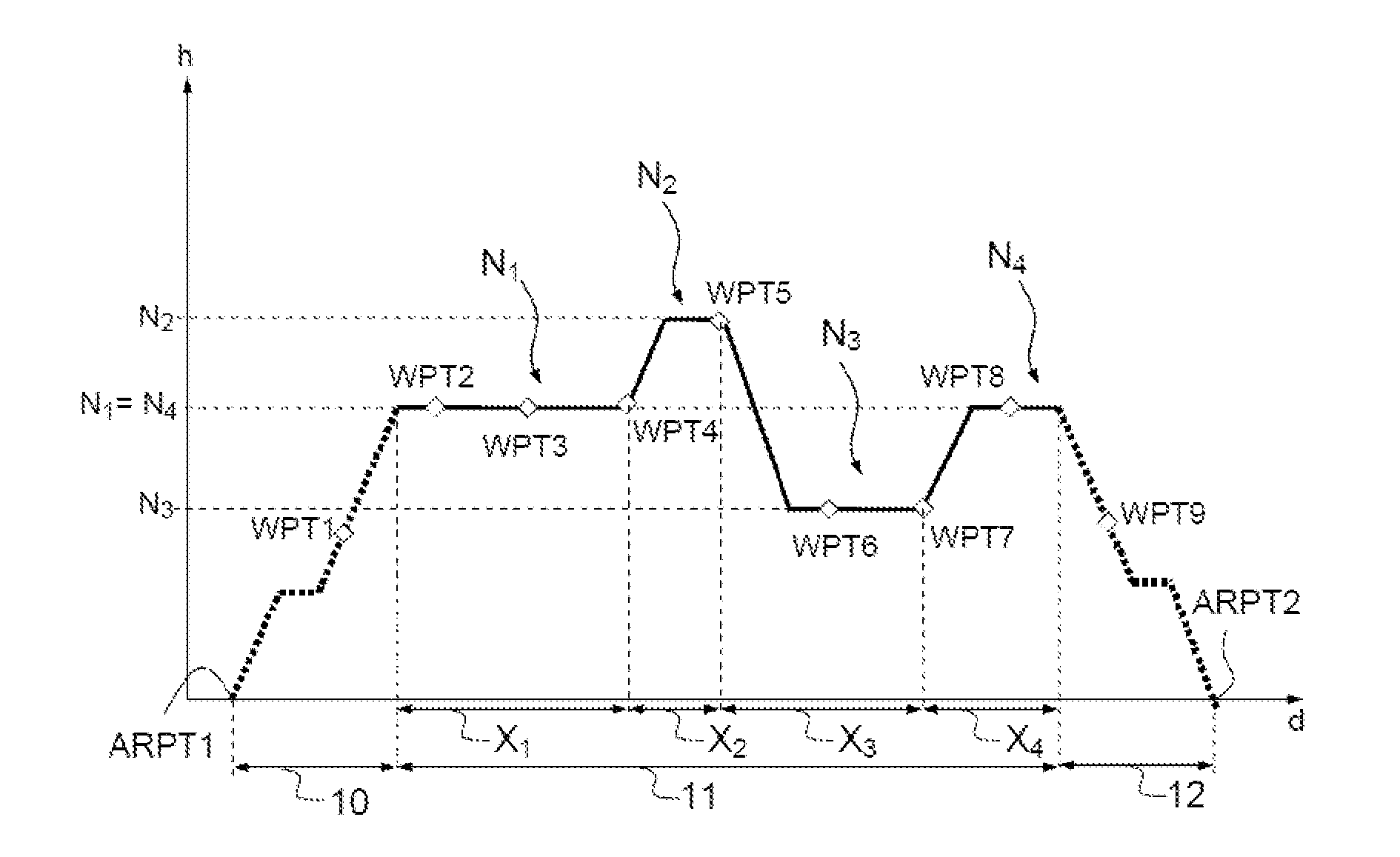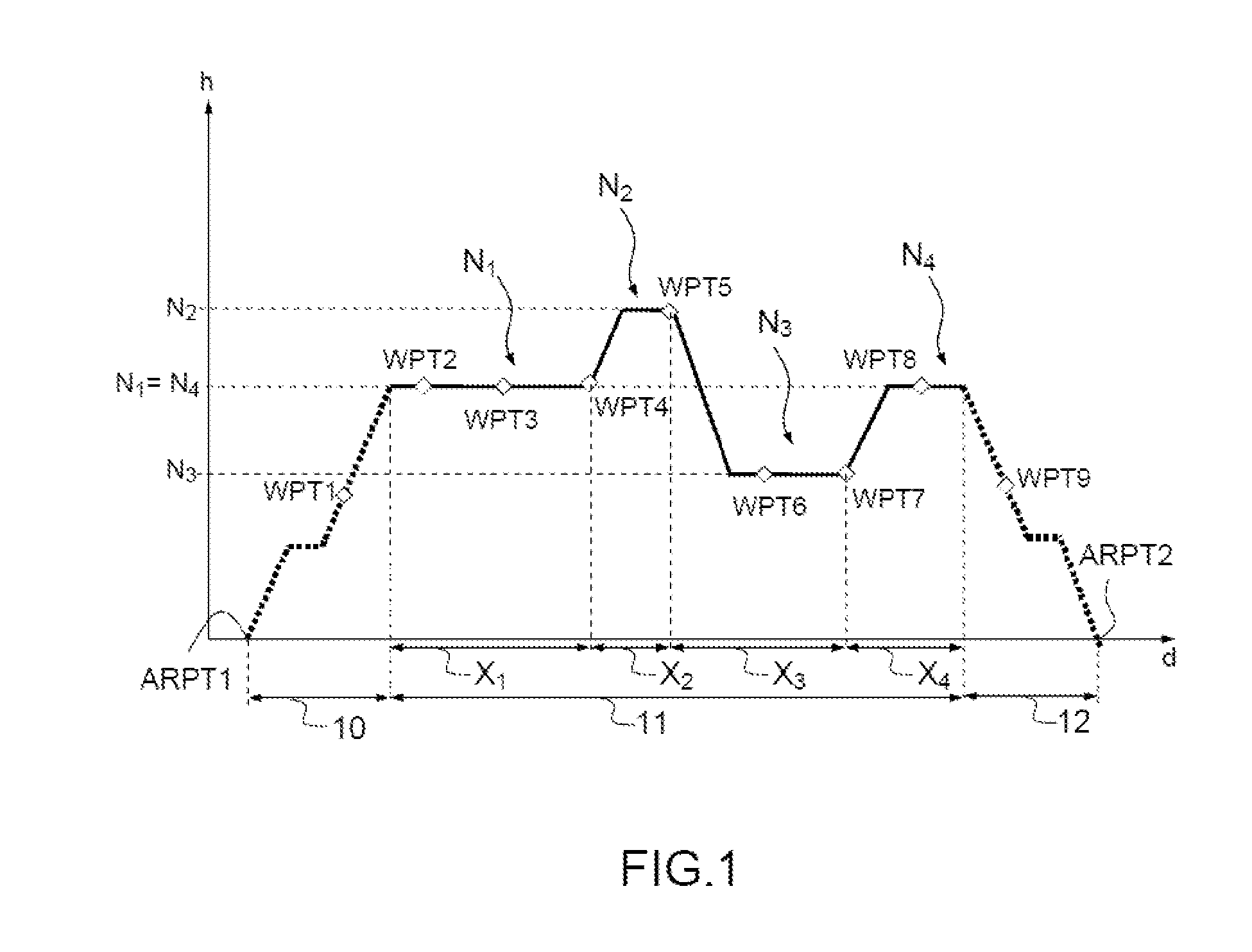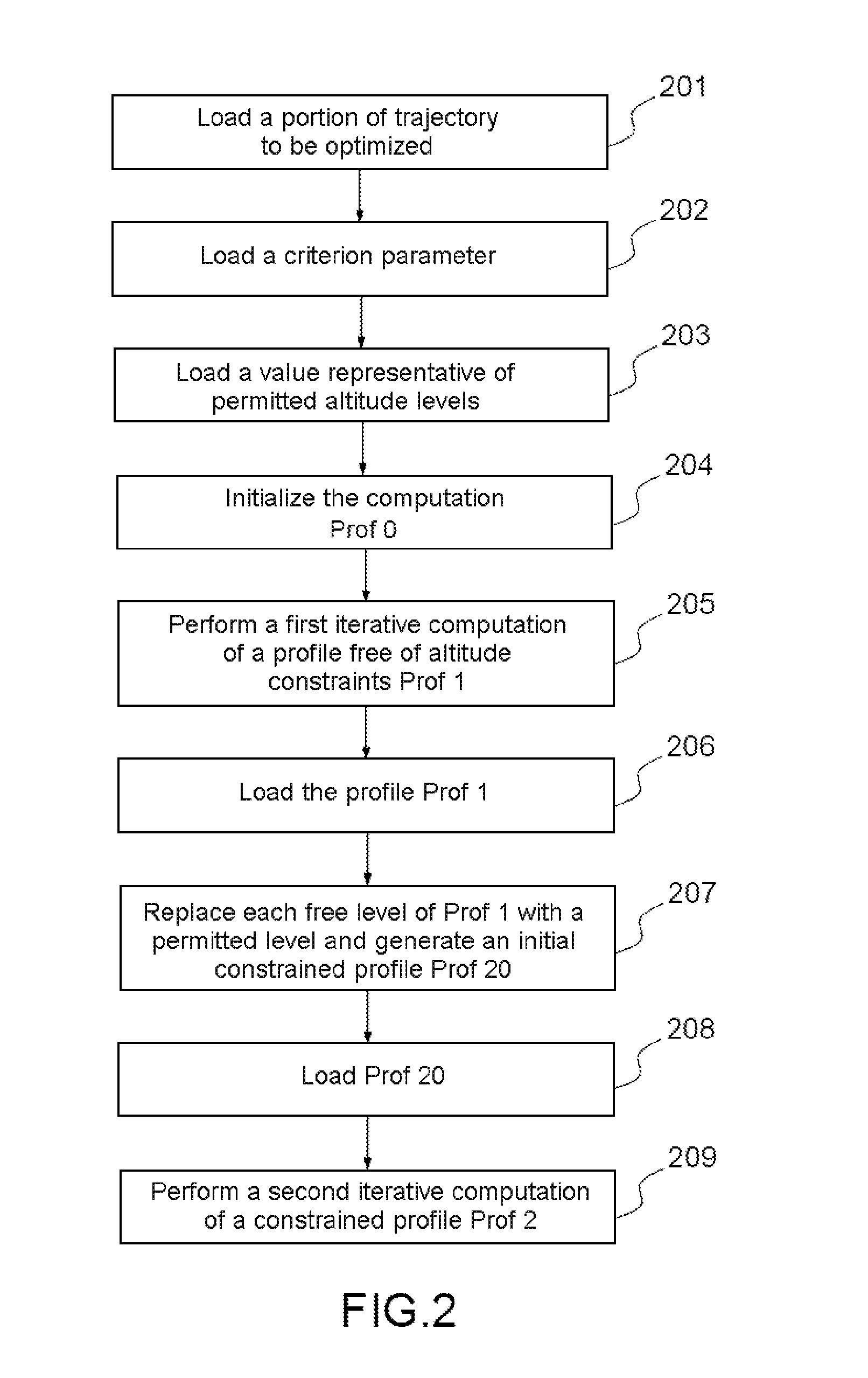Method for creating a vertical trajectory profile comprising multiple altitude levels
- Summary
- Abstract
- Description
- Claims
- Application Information
AI Technical Summary
Benefits of technology
Problems solved by technology
Method used
Image
Examples
Embodiment Construction
[0057]FIG. 1 illustrates an example of a vertical trajectory profile computed according to the invention. The phase 10 corresponds to the climb phase, the phase 11 to the cruising phase and the phase 12 to the descent phase.
[0058]This vertical profile is computed from a lateral trajectory computed by the FMS and involving an ordered list of waypoints WPT from the flight plan.
[0059]The vertical profile comprises a plurality of altitude levels Ni (commonly called level), i being the index, for example in FIG. 1: N1, N2, N3 and N4. These levels are altitude levels to be reached by the aircraft. Once the level Ni is reached, the aircraft flies at the altitude Ni until the level change point defined by a distance xi, between the level i and the next level i+1.
[0060]The distances xi identify the length of the altitude levels Ni. As an example, xi can correspond to a curvilinear abscissa or, as illustrated in FIG. 1, to the length, distance-wise, of a level Ni: x1 is the length of the leve...
PUM
 Login to View More
Login to View More Abstract
Description
Claims
Application Information
 Login to View More
Login to View More - R&D
- Intellectual Property
- Life Sciences
- Materials
- Tech Scout
- Unparalleled Data Quality
- Higher Quality Content
- 60% Fewer Hallucinations
Browse by: Latest US Patents, China's latest patents, Technical Efficacy Thesaurus, Application Domain, Technology Topic, Popular Technical Reports.
© 2025 PatSnap. All rights reserved.Legal|Privacy policy|Modern Slavery Act Transparency Statement|Sitemap|About US| Contact US: help@patsnap.com



